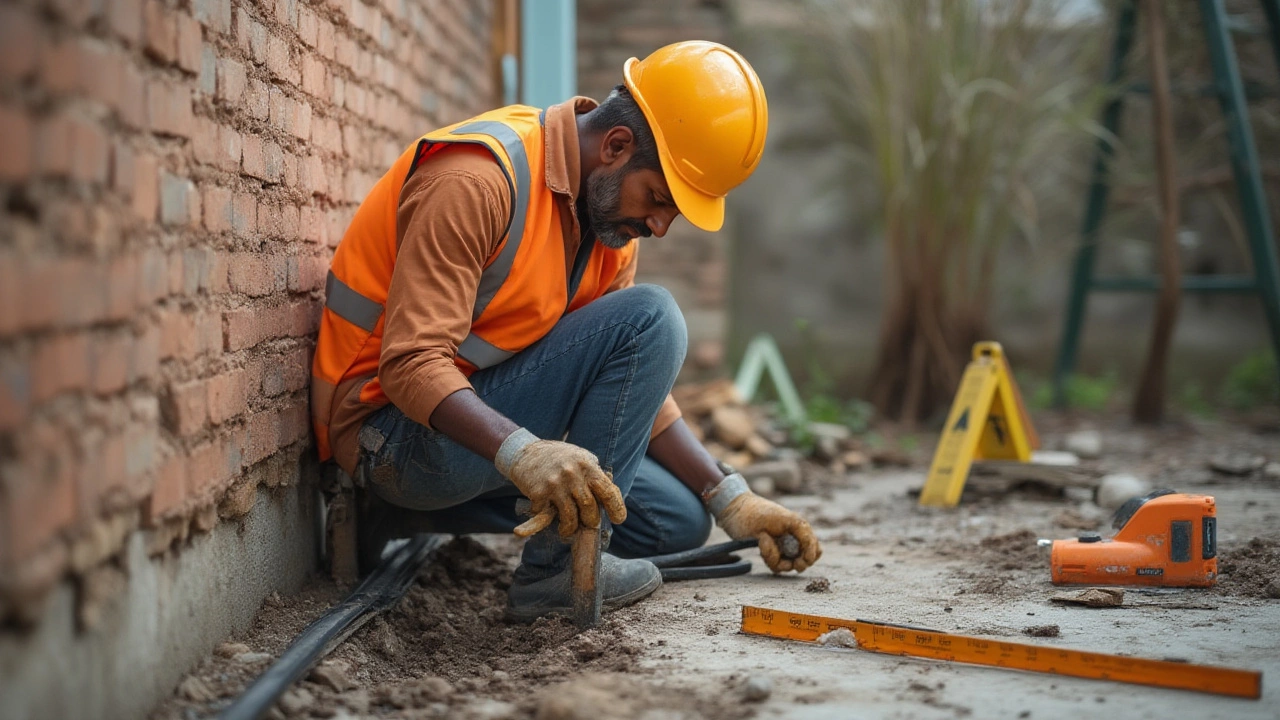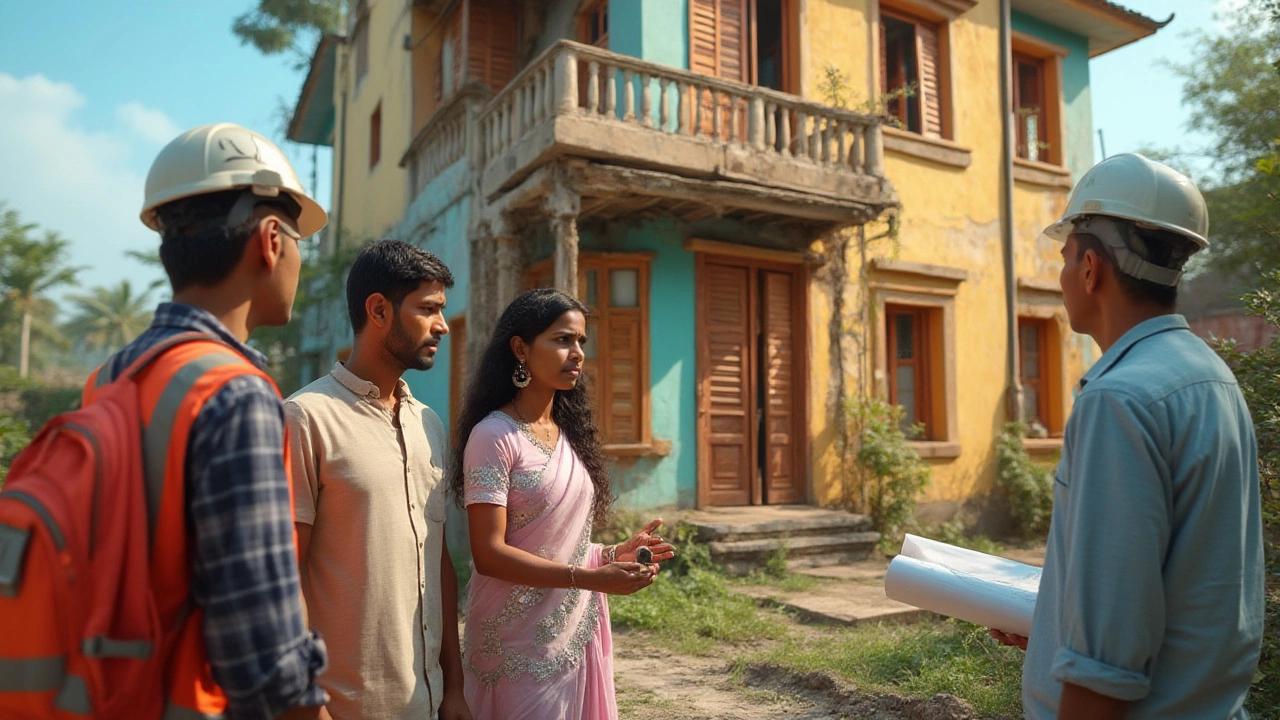Cracks zigzagging across the walls, doors that refuse to shut, a strange slant to your floors—these aren’t just cosmetic annoyances. They’re the house’s way of begging for help. All that trouble points in one direction: foundation problems. And you’re left wondering—can a house with a bad foundation honestly be saved, or is it a lost cause waiting to collapse in on itself?
The answer isn’t as black-and-white as folks hope. Whether you’re dealing with an old brick house in the middle of town or a relatively new build, foundation issues can turn into a real stress test—emotionally and financially. In the past, plenty of homeowners just bulldozed the place when things got bad. Nowadays, with smarter technology and better materials, even foundations in rough shape aren’t always a death sentence for your home. The real magic lies in catching the clues early and choosing the right fix before small cracks become gaping wounds that can swallow your savings whole.
What Makes a Foundation "Bad"—And How Does It Happen?
Every home rests on its foundation—the invisible champion (or villain) keeping the place solid. A "bad" foundation usually means the structure holding up the house is failing, shifting, or sinking. That could be from one big problem or a cocktail of smaller ones piling up over time. In the U.S., around 25% of homes face some kind of foundation issue during their lifespan, and about 5% develop damage severe enough to seriously threaten stability.
What’s behind these failures? Water tops the list almost every time. Poor drainage, heavy rain, and rising groundwater can all soften the soil under your place, washing away support. On the other hand, drought can cause soil to shrink, pulling your foundation apart—especially if you live in places with clay-heavy dirt. Tree roots, earthquakes, shoddy construction practices, and even house settling over decades each play a part. Old homes built before modern codes are especially vulnerable.
Don’t count those hairline wall cracks as harmless. They’re usually the first clue the foundation’s in trouble. More obvious signs creep in as things worsen—floors dip or bulge, doors and windows start sticking, cabinets won’t close, and in really rough cases, you’ll see brick or siding pulling away from the frame. If you spot slanted floors or cracks wide enough to fit a quarter, it’s time to call in an expert.
But here’s the real kicker—many foundation issues simmer in the background for years before they explode into disaster. Sometimes, you inherit the problem without knowing until an inspection or visible damage happens. That’s why real estate agents stress pre-purchase inspections so much. Without one, you might be biting off a world of headaches.
The construction type matters, too. For example, slab-on-grade foundations offer less room to spot or address damage than crawl spaces or basements. In frost-prone areas, foundations need to be deeper and insulated, since repeated freeze-thaw cycles can jack up the concrete, splitting it apart year by year. Builders cutting corners—using low-grade concrete, skipping rebar, or failing to compact soil—serve up foundation time bombs that detonate when you least expect it.
In the worst cases, improper repairs create more damage than they fix. Filling cracks without stopping the cause, or bolting on new supports without addressing drainage, just delays the real fix. The best time to act is always before the cracks get big and the repair bill gets massive.

Repair Options: What Actually Saves a Bad Foundation?
Finding out your house rests on a bad foundation doesn’t have to mean doom. Foundation technologies have evolved, and options range from quick fixes for minor settling to full-blown structural resuscitation for homes teetering on the edge. The type and cost of repair depend on the cause, extent of damage, age of the house, soil type, and how quickly you act. If you’re dealing with an old home, expect to juggle more unknowns and surprises than a modern build. Still, most houses—even in bad shape—are fixable by a skilled crew.
Let’s break down the main repair approaches:
- Piers and pilings: This is one of the most common methods. Contractors drive steel or concrete piers deep into stable ground under your home. Hydraulic jacks then lift and level the house. Fixing with piers isn’t cheap—average jobs run from $8,000 to $30,000 in the U.S.—but it can literally save a teetering house. The upside: it addresses ongoing settlement, working with most soil types.
- Slabjacking (mudjacking): For sunken concrete slabs, pros inject a cement or polyurethane mixture under the floor to lift it back into place. It’s less invasive and cheaper, usually between $3,000 and $7,000, but it works best for smaller fixes. Don’t expect miracles if the home is sinking everywhere, or if soil conditions keep shifting.
- Wall anchors and bracing: Bowing or leaning basement walls can often be stabilized with steel rods or wall anchors set outside the home. Over time, these anchors pull the wall back to where it belongs. Expect to pay around $3,000 to $10,000, depending on wall length and access. It’s a solid solution as long as there’s open ground to anchor into.
- Waterproofing and drainage: Many foundation failures start with water problems. Adding exterior drainage, sump pumps, waterproof barriers, or even simple gutter extensions can protect fixes you’ve made. Think of this as insurance—without good drainage, any repair is short-lived.
- Full foundation replacement: The nuclear option. This isn’t common, but in rare cases when the whole foundation is crumbling, the house is temporarily lifted, the bad concrete ripped out, and an entirely new foundation poured. It’s expensive ($50,000+ isn’t unheard of), takes weeks, and not every home can handle it. But for beloved old houses with historic value, it might be worth the drama and dollars.
The right fix depends on the root cause. An engineer, not just a handyman, should check out any foundation trouble before repairs start. Their report (often $500–$1,500) serves up the data contractors need to do the job right. With it, you get both the full scope and a roadmap to avoid repeat problems.
| Repair Method | Average Cost (USD) | Best For | Expected Lifespan |
|---|---|---|---|
| Piers & Pilings | $8,000–$30,000 | Severe settling/sinking | 50+ years |
| Slabjacking | $3,000–$7,000 | Sunken slabs, minor settlement | 10-20 years |
| Wall Anchors | $3,000–$10,000 | Bowed/bulging basement walls | 50+ years |
| Waterproofing | $2,000–$10,000 | Moisture & drainage issues | Varies |
| Full Replacement | $50,000+ | Major structural failure | 50+ years |
It’s worth knowing: repairs aren’t always surgical. Sometimes, a patch job keeps the house livable and marketable—but doesn’t stop deeper issues. If you plan to sell, transparency about past problems is vital. Foundation repairs do show up on records, and some buyers may want warranties or follow-up inspections.
Insurance rarely covers foundation repairs, by the way. Damage from earthquakes, floods, or poor construction isn’t typically included in a standard policy. In places where soil movement is expected (think Texas or California), specialized policies or endorsements are available, but you’ll need to dig for the right coverage.

Warning Signs, Tips, and What to Avoid When Fixing a Bad Foundation
Foundation repair is high stakes—cutting corners, waiting too long, or falling for contractor promises can leave you deeper in the hole. The best defense is being able to spot trouble early and act before costs skyrocket. So, what should you watch out for, and how can you avoid the most common traps?
- Walk your home’s perimeter and basement or crawl space a couple of times a year. Look for new cracks (inside or out), signs of water pooling, and shifting in exterior brick or block.
- Monitor doors and windows. If they suddenly get stuck for no clear reason, or gaps appear where there weren’t any before, suspect the foundation.
- Keep an eye on your floors. Ceramic tiles are especially sensitive to movement—cracked grout or tiles that shatter are red flags. Unexpected dips and humps mean trouble below.
- Old efflorescence (that white powdery stuff) on basement walls means water was or is getting through your foundation. Initial moisture leads to long-term rot or foundation weakening.
- Test your rain gutters and downspouts after a downpour. If they’re dumping water next to the foundation, redirect immediately—proper drainage is your best chance to stop problems before they start.
Not all cracks are equal. Horizontal cracks in basement walls are more worrying than vertical ones, especially if they’re wider than 1/4 inch. Always take photos for proof and ongoing monitoring—if a crack grows quickly, don’t wait to call for help.
Here’s where many homeowners mess up: hiring the cheapest or fastest contractor, thinking it’s just a small crack, or ignoring the need for an engineer’s report. Shoddy repairs can make things so much worse—band-aid solutions often shift the problem, so you could end up with new cracks after one gets fixed. Demand references, check the contractor’s license and insurance, and always get a few quotes before signing anything.
If buying a house, insist on a foundation inspection before closing, especially in areas known for soil movement or older neighborhoods. Foundation repairs can eat up a new homeowner’s savings faster than almost any other home expense. Meanwhile, if you already live in your house, investing in early repairs is cheaper than waiting for things to go sideways.
Not sure what to ask contractors? Here’s a cheat sheet:
- What’s causing the problem, and what happens if it isn’t fixed now?
- What’s the recommended fix, and why?
- How much disruption should I expect—will I need to move out?
- Is there a warranty, and for how long?
- Will the repairs fix cosmetic issues inside if needed?
Remember, most foundation repairs are permanent tweaks. With the right fix, and by stopping water or soil issues, your home should stay strong for decades. But you can’t put off foundation problems for long. As one foundation specialist put it bluntly back in a 2023 interview: “By the time your floors start bouncing, you’ve waited too long.”
If you ever wondered whether a house with a bad foundation could be saved, now you know that most can—if you have the right approach, decent professionals, and move before things go from bad to catastrophic. That old house on the hill sloping just a little? It’s probably not doomed. But it’s gonna need honest attention—and your checkbook—to stay standing strong.

Written by Fletcher Abernathy
View all posts by: Fletcher Abernathy